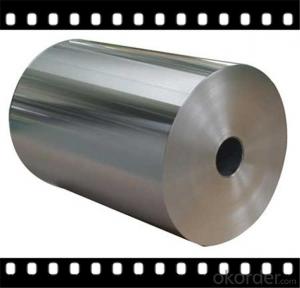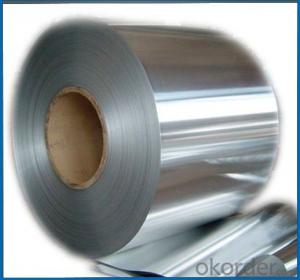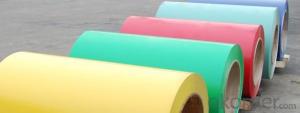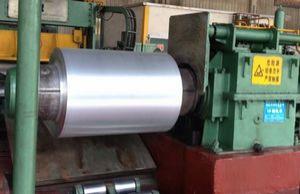102 Aluminum Coil for Curtain Wall Application
- Loading Port:
- Shanghai
- Payment Terms:
- TT OR LC
- Min Order Qty:
- 15 m.t.
- Supply Capability:
- 2000 m.t./month
OKorder Service Pledge
OKorder Financial Service
You Might Also Like
Specification
Structure of Aluminium Profile for Curtain Wall Application Description:
Coated aluminum coil/sheet are of a wide range of colors, which gives wonderful appearance no matter in residential and commercial constructions of great exhibition centers.
The coated aluminum coil/sheet have been widely used in the fields of construction and decoration( garage doors, ceiling etc.), electronic appliances, lighting decoration, air-condition air pipes, sandwich panels and drainages etc.
Main Features of the Aluminium Profile for Curtain Wall Application:
1) High flexibility
2) Impact resistance
3) Excellent weather-proof durability
4) Anti-ultraviolet
5) High erosion resist
Images of the Aluminium Profile for Curtain Wall Application:


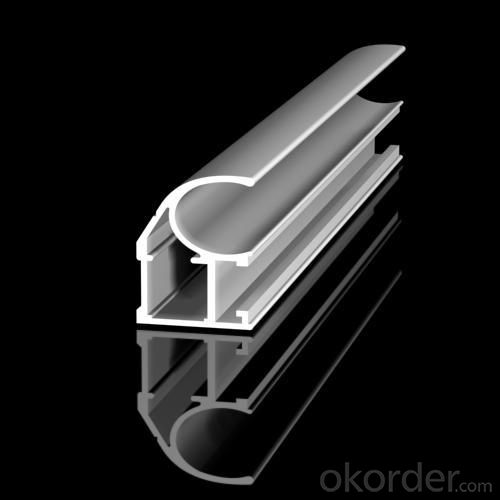
Aluminium Profile for Curtain Wall Application Specification:
Alloy | A1100,A3003,A1050,A8011 etc |
Temper | H16,H18,H24 |
Thickness | From 0.024mm to 1.2mm |
Width | Standard width:1240mm |
Special width:1300mm,1520mm,1570mm,1595mm | |
Diameter | Standard dia:1200mm |
Interior dia:150mm,405mm,505mm | |
Weight | 2.5 T/coil,3.0 T/coil |
Coating | PE, PVDF, AC |
Surface | Embossed, mill finish, coated |
Color | AS to code RAL |
Gloss | 10-90%(EN ISO-2813:1994) |
Coating Thickness | PE: more than 18 micron |
PVDF: more than 25 micron | |
Coating Hardness (pencil resistance) | More than 2h |
Coating adhesion | 5J(EN ISO-2409:1994) |
Impact Resistance | No peeling or cracking(50 kg/cm,ASTMD-2794:1993) |
Flexibility (T-bend) | 2T |
MEK resistance | More than 100 |
FAQ:
a.What is monthly capacity
---CNBM is one stated own company and our monthly capacity is about 2000tons.
b. Now which countries do you export your goods?
---Now we export to South East Asia,Africa, North America,South America ect.
- Q: How are aluminum coils joined or welded?
- Aluminum coils are usually joined or welded using various methods such as resistance welding, TIG (Tungsten Inert Gas) welding, MIG (Metal Inert Gas) welding, or laser welding. These techniques involve applying heat and pressure to melt and fuse the aluminum coils together, creating a strong and durable joint.
- Q: How are aluminum coils coated or finished?
- Aluminum coils can be coated or finished in various ways to enhance their appearance, protect against corrosion, or improve their functionality. The most common methods of coating or finishing aluminum coils include painting, anodizing, and laminating. Painting is a popular coating method where a layer of paint is applied onto the aluminum surface. This can be done through different techniques such as spray painting, roll coating, or coil coating. The paint can be customized in terms of color, gloss level, and texture, allowing for a wide range of aesthetic options. Additionally, painting can provide protection against atmospheric conditions and increase the durability of the coils. Anodizing is another widely used technique, especially for architectural and industrial applications. It involves creating a controlled oxide layer on the surface of the aluminum through an electrochemical process. Anodized aluminum coils have a uniform and durable finish that enhances their resistance to corrosion, scratching, and fading. They are available in various colors and can be further enhanced with a matte, brushed, or polished appearance. Laminating is a process where a thin layer of protective film is applied onto the surface of the aluminum coil. This film can be made of different materials such as PVC, polyester, or polyethylene. Laminating provides an extra layer of protection against scratches, dirt, and UV radiation. It also allows for easy cleaning and maintenance of the coated aluminum coils. In addition to these methods, aluminum coils can also be coated with specialized finishes for specific applications. For example, coils used in the automotive industry may have a polymer-based coating that provides lubricity and reduces friction. Coils used in the construction industry may have a heat-reflective coating to improve energy efficiency. Overall, the coating or finishing of aluminum coils plays a crucial role in enhancing their appearance, protecting against corrosion, and improving their functionality for various applications. The choice of coating method depends on the desired outcome, budget, and specific requirements of the end-use industry.
- Q: How are aluminum coils used in heating, ventilation, and air conditioning (HVAC) systems?
- Aluminum coils hold a vital role in HVAC systems, specifically in heating, ventilation, and air conditioning. These coils are implemented in both the condenser and evaporator parts of the system. In the condenser, the aluminum coils aid in the transfer of heat from the refrigerant to the surrounding air. The refrigerant, which is in a state of high pressure and temperature after compression, flows through the condenser coils. As the air from the surroundings passes over these coils, the heat from the refrigerant moves to the air. This procedure contributes to the cooling of the refrigerant, transforming it from a gas into a liquid state. The cooled liquid refrigerant then moves to the evaporator coil. In the evaporator, the aluminum coils help in the absorption of heat from the indoor air. The liquid refrigerant enters the evaporator coils, where it experiences a change in phase from liquid to gas. As the warm indoor air passes over the coils, the refrigerant absorbs the heat, resulting in the cooling of the air. This cooled air is subsequently circulated back into the room, creating a comfortable indoor environment. The preference for aluminum coils in HVAC systems stems from their outstanding thermal conductivity, resistance to corrosion, and lightweight properties. These characteristics ensure effective heat transfer and enhance the overall performance of the system. Moreover, aluminum coils are more cost-efficient and environmentally friendly compared to materials like copper. Regular maintenance and cleaning of the aluminum coils are imperative to maintain their optimal functioning. Over time, dirt, dust, and debris can accumulate on the surface of the coils, hindering heat transfer and reducing efficiency. Thus, periodic cleaning is essential to preserve the performance of the HVAC system and prolong the lifespan of the aluminum coils.
- Q: Can aluminum coils be used in the production of electronic components?
- Indeed, electronic components can utilize aluminum coils in their production. Aluminum, a highly versatile and extensively employed metal across diverse industries, including electronics, harbors numerous benefits. Notably, it possesses a lightweight nature, exceptional thermal conductivity, resistance to corrosion, and superb electrical conductivity. These remarkable properties render aluminum coils fitting for deployment in electronic components, encompassing capacitors, transformers, inductors, and heat sinks. By incorporating aluminum coils in electronic components, the dissipation of heat becomes more efficient, performance is enhanced, and the overall weight of electronic devices is reduced.
- Q: What are the different surface protection options available for aluminum coils?
- There are several surface protection options available for aluminum coils, depending on the specific requirements and applications. 1. Paint Coating: One of the most common methods of surface protection is applying a paint coating on the aluminum coil. This provides a protective layer that helps prevent corrosion, oxidation, and damage from environmental factors. Additionally, paint coatings can offer aesthetic appeal and come in various colors and finishes. 2. Anodizing: Anodizing is an electrochemical process that creates a durable and corrosion-resistant oxide layer on the surface of the aluminum coil. This method not only enhances the coil's resistance to wear and tear but also provides a decorative appearance. Anodized coatings can be clear or colored, offering flexibility in design options. 3. Film Protection: Applying a protective film on the surface of the aluminum coil is another common option. These films are typically made of plastic or vinyl and provide a temporary layer of protection during transportation, handling, and installation. They safeguard against scratches, abrasions, and other minor damages before being removed. 4. Powder Coating: Powder coating involves the electrostatic application of a dry powder onto the aluminum coil's surface. The powder is then cured under heat, resulting in a durable and resilient protective layer. Powder coatings are known for their excellent resistance to chemicals, UV rays, and physical impacts. 5. Cladding: Cladding, also known as laminating, involves bonding a protective layer, such as PVC, onto the aluminum coil's surface. This method provides enhanced resistance against scratches, impact, and weathering. Cladding can offer additional benefits, such as thermal insulation and noise reduction. These surface protection options vary in terms of cost, durability, appearance, and specific application requirements. It is essential to consider factors such as the intended use, environmental conditions, and desired aesthetics when selecting the most suitable surface protection option for aluminum coils.
- Q: Can aluminum coils be used in the production of cryogenic storage tanks?
- Cryogenic storage tanks can incorporate aluminum coils, as aluminum is a suitable material for such purposes. This is due to its low density, high thermal conductivity, and excellent resistance to corrosion. These attributes make it an excellent choice for the storage and transportation of cryogenic liquids like liquid nitrogen, oxygen, and argon. Aluminum coils can be utilized to construct the internal shell of the tank, which offers a lightweight and durable solution. Moreover, aluminum is highly malleable, enabling the creation of intricate tank shapes and designs. However, it is crucial to consider that aluminum has a higher coefficient of thermal expansion compared to materials such as stainless steel. Therefore, adequate design measures must be implemented to accommodate thermal contraction and expansion during cryogenic operations.
- Q: What are the different color options for coated aluminum coils?
- There is a wide selection of colors available for coated aluminum coils, catering to different aesthetic preferences and project requirements. White, black, silver, gray, bronze, gold, red, blue, green, and brown are some of the commonly chosen colors for coated aluminum coils. These colors can be achieved using various coating processes and techniques, such as powder coating, PVDF coating, or polyester coating. In addition to these standard options, customers also have the opportunity to select custom colors that align with their design vision or brand identity. The versatility and flexibility of the color choices for coated aluminum coils make them suitable for a variety of applications, including building facades, roofing systems, signage, interior decoration, and more.
- Q: Are aluminum coils suitable for food and beverage packaging?
- Yes, aluminum coils are suitable for food and beverage packaging. Aluminum is a versatile material that offers various advantages for packaging applications. It is lightweight, making it easy to transport and handle. Aluminum is also highly resistant to corrosion, which ensures that the packaging remains intact and protects the contents from external factors. Additionally, aluminum has excellent thermal conductivity, allowing for efficient heat transfer, which is beneficial for food and beverage products that require temperature control. It is also impermeable to light, moisture, and oxygen, providing an excellent barrier to maintain the quality and freshness of the packaged items. Furthermore, aluminum is recyclable and can be reused, making it an environmentally friendly choice for packaging. Overall, aluminum coils are a reliable and suitable option for food and beverage packaging due to their durability, protective properties, and sustainability.
- Q: How much can i get for a gallon filled with aluminum Tabs from cans
- Aluminum is not sold by the gallon, it is sold by the pound, so you need to weigh what you have to determine what it is worth. Aluminum is not expensive, so the price you can expect is around 30 to 60 cents per pound.. Contact local recycling centers near you to find out what the going rate for is in your area.
- Q: Can aluminum coils be used in vacuum applications?
- Indeed, aluminum coils are capable of being employed in vacuum applications. Aluminum, being a frequently utilized substance in vacuum systems, possesses exceptional attributes including low outgassing, high thermal conductivity, and commendable corrosion resistance. Consequently, these qualities render aluminum coils suitable for a diverse array of vacuum applications, encompassing, but not restricted to, vacuum chambers, vacuum pumps, cryogenic systems, and particle accelerators. Nevertheless, it is crucial to acknowledge that aluminum may react with particular gases or chemicals. Hence, it is imperative to carefully evaluate the specific necessities and compatibility of the vacuum application prior to employing aluminum coils.
Send your message to us
102 Aluminum Coil for Curtain Wall Application
- Loading Port:
- Shanghai
- Payment Terms:
- TT OR LC
- Min Order Qty:
- 15 m.t.
- Supply Capability:
- 2000 m.t./month
OKorder Service Pledge
OKorder Financial Service
Similar products
Hot products
Hot Searches
Related keywords











